Renaissance Soulja
Wednesday, September 17, 2014
Friday, September 5, 2014
Friday, August 15, 2014
The Blind Songbird
Bernadette "Bernah" Navarro, whose native talents were first discovered at the age of three, is a truly promising performer who can inspire and entertain her audience despite her poor eyesight.
When she was born, doctors diagnosed her that she would become totally blind. But her mother had seen a vision in her dream that her child would not live her life totally blind. She sought a doctor for a second opinion and after a series of tests, Bernah's left eye showed signs that it could see, but her right eye will remain blind. A year after, she had a left eye surgery. This spared her from a world of total darkness.
Growing up just like any people with imperfections, she was not exempted from being teased, whether directly or indirectly.
But she proved that she couldn't be let down by winning in singing contests, beating other children who were born without any disability.
Soon, she got enrolled in a special school for the visually impaired where she was treated, respected, and her talents fully recognized, thanks to the sponsorship which came from Monet Silvestre, voice coach and musician, among others.
One of her blind teachers, Mrs. Lopez, has "seen" the artist in her when she heard her sing for the first time, the nationalistic song, "Inang Bayan".
Her passion for music and zeal to perform was highly recognized, opening opportunities for her to sing and dance in big events. Because of this, she was dubbed, The Songbird of Philippine National School for the Blind.
Her dance teacher, Gloria Jamandre, said that aside from doing broadway, Berna could also do ballroom dancing and be a bamboo clapper in Tinikling.
A positive outlook in her life and her creative visualization let her achieve her dreams.
"Mahilig ako sa music at mag-imagine. Sa umaga, ang parati kong ginagawa ay linisin ang kwarto at ini-imagine ko na studio ang kwartong iyon. Tapos, magpapatugtog ako ng music at sumasabay ako sa pagkanta", Bernah said.
Her next step is to pursue an educational scholarship from a foundation so she could enter college and take up a course in Music. She dreamed of teaching music after getting a successful career in musical performance.
Truly, Berna's story is an inspiration for all to be brave in the face of adversity. One's imperfection is not a hindrance to become an achiever.
Friday, July 25, 2014
The Making of a Nipa Cottage
The nipa cottage business of Mrs. Gonzales is currently located in Highway 2000 in Taytay, Rizal but the materials used in making nipa cottages like bamboo usually comes from Baras or Tanay in Rizal, while thatched nipa palm leaves or pawid comes from Pangasinan.
How a Nipa cottage is made:
Four bamboo poles and coco lumber are used to erect the framework of the cottage. Bamboo poles function as pillars while coco lumber is used as joists to support the flooring, sitting area and upper support of the structure. The outer skins of bamboos have to be removed manually by the use of bolo.

Next, bamboo slats are laid over and nailed to the coco lumber joists to serve as the floor and place for sitting.
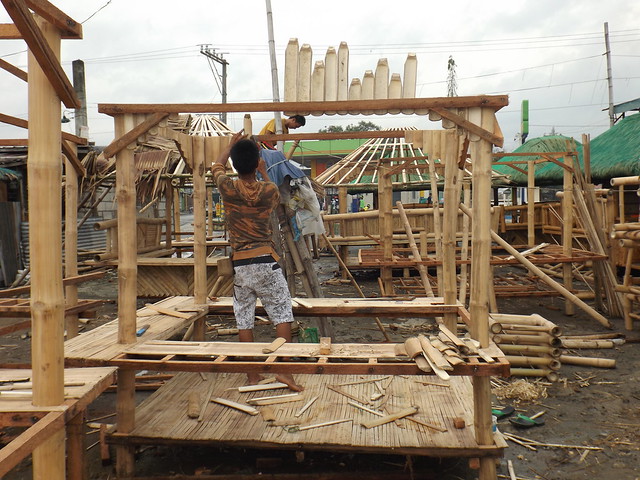
Wider bamboo slats are nailed and cut with a saw to cover the joists of the upper framework.
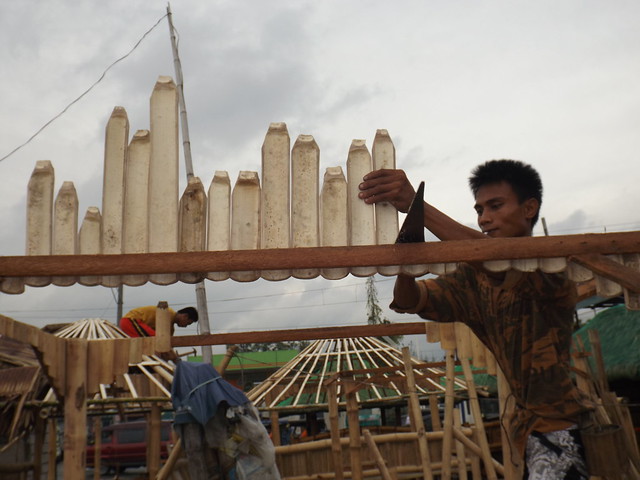
Next, the pyramidal roof framework is constructed out of bamboo.

Walls are made by nailing bamboo slats on two long bamboo poles. The bamboo walls are attached between the bamboo pillars of the body framework. The slats are also added to cover the lower part of the structure.


Next, dried Nipa palm thatch panels were laid by overlapping them on the roof framework.


The nipa cottage is now built completely with a door optionally added. A net covers the roof and the black designs are applied by creatively burning some parts of the bamboo. The last step is varnishing.


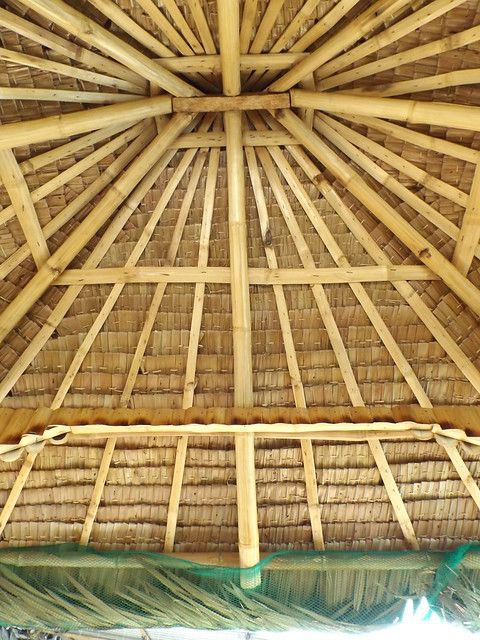
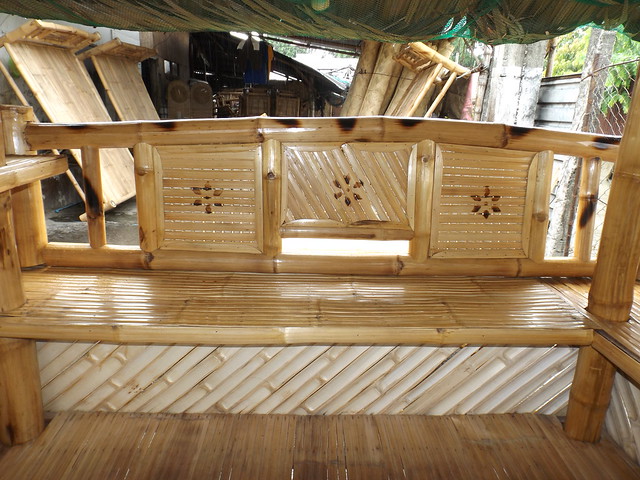
This homey cottage takes a week to build by one or two persons. Ordinary cottages cost from twelve to twenty five thousand pesos while cottages with a room may cost forty to fifty thousand pesos.
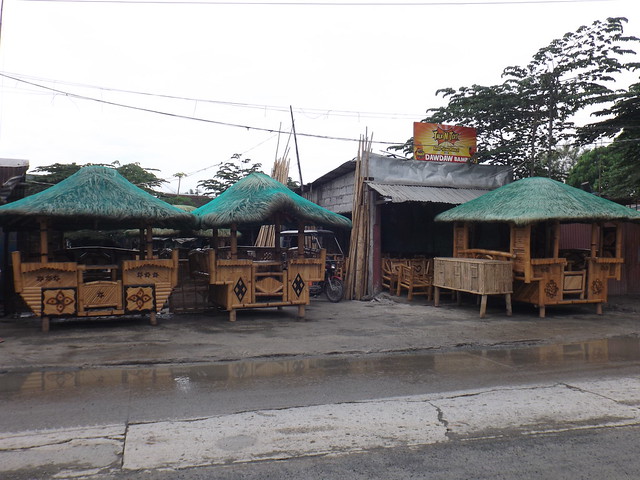
Sunday, June 22, 2014
The Philippine Toy Convention of 2014
 I was right. The biggest annual gathering of toy collectors, cosplayers, and J-pop and Anime fanatics happened just recently at Megatrade Halls 1-3 in SM Megamall.
I was right. The biggest annual gathering of toy collectors, cosplayers, and J-pop and Anime fanatics happened just recently at Megatrade Halls 1-3 in SM Megamall.
Sunday, June 8, 2014
The Dance of the Nine Maidens
Despite Makati being a modern and highly-urbanized city, it has preserved a tradition that is passed on from generation to generation since the Spanish era - a tradition known as Bailes de los Arcos (Dance of the Arches) or Panatang Sayaw.
Bailes de los Arcos is performed on two consecutive feast days - The Feast of the patron saints Peter and Paul (June 29) and Virgen de la Rosa (June 30) at the plaza of Barangay Poblacion in front of the 17th-century church of Makati.
The dance ritual, which is performed for two hours, has three parts: the diccho or chanting of prayers by each dancer or "mananayaw";
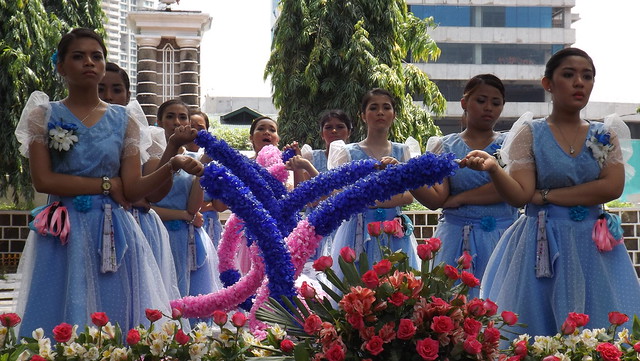
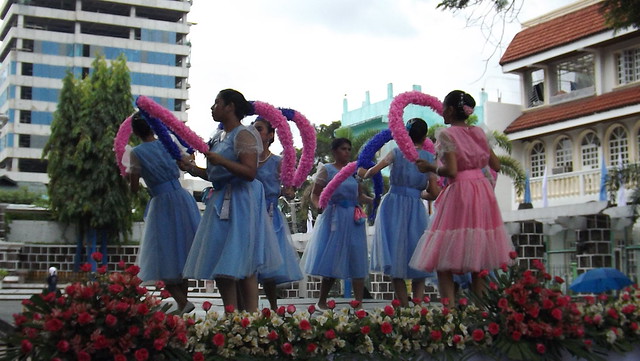
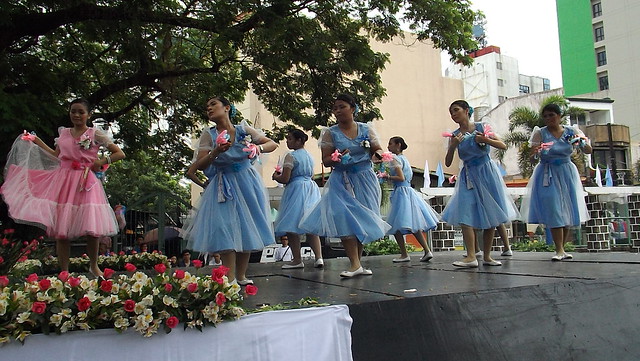
Nine maidens aged 14 years old and above are chosen to be trained as dancers. They must be devotees of Saints Peter and Paul and the Virgin Mary, and can sing high notes.
The most important qualification however, is to be in a state of virginity for the dance is an offering to the Virgen de la Rosa.
Their mothers, grandmothers, and even their grandmothers' mothers were once the virgin dancers.
Devotees strictly choose maidens who wish to be part of the dance.
The old folks of the Poblacion believe that a storm will happen on the day of the feast if one of the dancers lied about being a virgin.
Panata
Some of the dancers dance for several years because it is their "panata".
When a virgin dancer's wish has come true after the "Panatang Sayaw", she may leave the group if she wants to.
The longest-tenured dancer remaining becomes the Capitana or the leader.
The Panatang Sayaw tradition is preserved with the help of the 74-year old Erlinda Atilon-Reyes, a former mananayaw and Capitana. According to her, she taught the dance ritual she learned from her ancestors to the next batches of dancers.
Now that she is getting older and weaker, she still plays some roles in Bailes de los Arcos such as conducting the orchestra.
One of her nieces, Chikee, is this year's Capitana. She has been dancing for seven years.
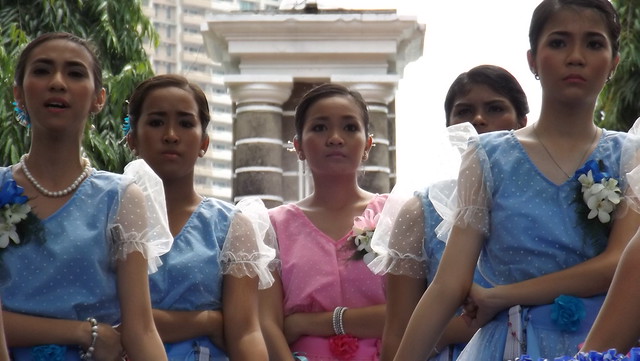
Chikee has been wishing to earn her college degree at Pamantasan ng Lungsod ng Maynila and become a licensed Chemical Engineer. She's now an incoming 5th year student.
Just like the other dancers, her personal intentions compel her continue her devotion to the patron saints and the Virgin by being a mananayaw.
Witnessing the dance ritual
Enter gray skies. Eight girls dressed in blue and another girl dressed in pink sang songs of prayer and danced while at the center of the stage.
Ladies, young and old, sang simultaneously while watching the ritual. It's amazing that they still have memorized the song despite the long lyrics.
Light drizzles came intermittently but the show went on for two hours. There was no heavy rainfall. A few hours later, they continued to dance on the streets of Barangay Poblacion.
This ritual describes the Filipinos' religiousness and value for culture. Old beliefs are still observed even up to this age of modern technology.










